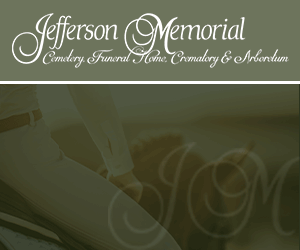The rider communicates to the horse with three aids: the leg, the seat, and the hands. The rider’s leg asks the horse to go forward the seat balances the torso and the reins steer and regulate the forward energy. The more advanced rider learns to control the gaits of the horse with the seat, and the other aids become more refined.
Many classical trainers say, “if you have no seat you have no rider.” And that is right, but if the leg is not in the correct position your seat or torso will never be correct either. The rider is supposed to sit in a vertical position with the leg, hip and ankle in alignment. This is called vertical alignment. This is the same alignment a rider needs just to stand on the ground without the horse under them. A person could not stand with their legs out in front of them, but they could do this on a horse (because the horse supposes them). This is called a chair seat and puts the rider behind the action of the horse. A rider should, ‘Go with the horse,’ not ride in the back seat!
A correct leg position will also keep the rider’s aids more clearly communicating to the horse. Riding a horse is like playing a musical instrument so if your finger placement is out of the correct position on the instrument you will play the instrument out of tune. This is the same with the leg position of the rider. If the rider’s leg is not correct, they will not be riding with the horse but will be riding out of sync. Riding a horse in harmony and, as a result in tune, with clear aids requires that the rider have all three aids in the correct position the leg, seat, and hand, not only the leg correctly positioned under the hip!
Keeping the ankle under the hip while riding requires a conscious effort when learning how to ride until it becomes a habit. Most riders want to grip with the leg, and this brings the leg up, shortens it and causes the joints to stiffen. The rider’s joints should remain flexible to go with the horse and absorb the motion of the horse’s gaits. The best way to learn how to develop a good leg position with flexible joints is to practice jumping position or two point. When the rider can do jumping position and keep balance with no support from the hands then they learn how to post the trot, sit the trot and go up into jumping position effortlessly maintaining the leg position for all three riding seats.
If the rider grips with the legs, the joints do not work as the shock absorbers that are needed to ‘go with’ the horse and absorb the horse’s varying rhythms at all three gaits. Not only does the rider’s ankle need to learn to stay under the hip without gripping but the knee joint needs to be able to open and close to remain reflexible as well. The rider’s hips, that also work as a joint or hinge, need to move with the action of the horse’s back when not posting. So not only do the three joints of the rider’s leg need to be flexible to move with the horse, the correct leg position keeps the rider’s torso balanced, so the rider goes with the horse and is not riding behind the action.
The side of the leg is to be positioned on the horse with the toes pointing forward and not out. When the side of the leg is on the horse (the inner thigh), the rider has an open seat or hips (pelvis). If the toes are sticking out like in a ballerina’s stance called a plie, this causes the rider’s seat to become pinched. The seat is supposed to be like an upside U on the back of the horse and follow the motion of the horse’s back. Allowing the seat to be curved like an upside U will assist the rider in having a following seat that does not impede the horse’s rocking motion. If the toes stick out causing the hips to turn out (they are all connected) then the seat pinches. This has been described as a close pin seat! Hmmm, would I rather have a seat on my horse shaped like an upside U that envelopes the horse motion or a close pin seat that is pinched and not open?
Riding a horse is not an easy feat. It requires discipline and desire! But the better we ride our horses with a correct leg position, the more our horses will appreciate the partnership. Developing a good leg position that can absorb the horse’s motion, and goes with the horse combined with a following seat and hands that allow and guide, will make for a more The rider has the same leg position sitting the trot as she does posting and in jumping position. The ankle is under the hip and the toes are pointing
straight ahead. Riding in jumping positions helps to train the rider to get the ankle under the hip. Rider’s practice going from jumping position to a posting trot and sitting trot keeping the same leg position. pleasurable experience for both equine and human.
Next article the rider’s torso (seat) and following article the rider’s hands.
llustration from Sally Swift’s book Centered Riding. It shows the four “building blocks” of riding alignment – the leg (ankle), hip and rider’s shoulders plus ear in vertical alignment. This correct riding alignment is for both English and Western riders.



